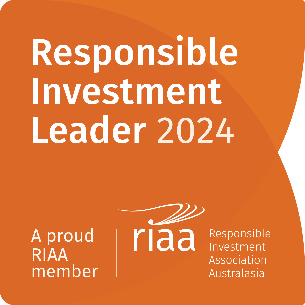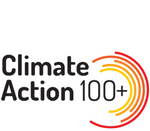A Trip to China

3 April 2019
In managing our clients’ NZ and Australian investments it is critically important to have a clear view on what is happening in China. China is not only the world’s second largest economy, it is also Australia’s and New Zealand’s largest trading partner (c. 20-30% of both countries’ exports) and its economic performance influences investor sentiment in both the New Zealand and Australian share markets.
Portfolio Manager Tama Willis, who has researched China for over 15 years, recently spent a week in Beijing, Shanghai and Tangshan attending presentations and talking to companies and commodity experts. His visit came at a time of surging Australasian commodity exports, however set against a backdrop of slowing global growth and perceived challenges with China in areas such as security (China Sea), technology (Huawei) and direct investment.
Signs of a slowdown?
Since our last visit in2018, which coincided with the imposition of import tariffs on Chinese goods by the US government, the Chinese economy has slowed down. For example, the recently released February industrial production data was the weakest result since 2009 (due to softer export conditions). Fixed Asset Investment (FAI) did pick up slightly to 6.1% growth yoy from 5.9% in December but notably that compares with much stronger growth of 7.9% in the previous year. The deleveraging in the economy and tight control of the property market has seen overall credit growth slow and a result, the Chinese government has reduced their GDP growth target for 2019 to 6.0-6.5% compared to 6.6% in 2018.
But contrastingly, continued support for commodity prices
Encouragingly though, our visit to China confirmed that demand has shown signs of recovery post Chinese New Year, with confidence also improving from the previous quarter. Steel producers are reporting stronger demand from the Infrastructure sector and stable conditions across the Property sector, however this has been offset to some extent by weakness in the Auto and Appliance industries. Most steel companies we met are expecting broadly flat demand in 2019 (which is better than many analysts’ assumptions) although there could be some modest growth if current conditions persist. Domestic capacity constraints across a range of commodities remain in place including steel, aluminium, coal and iron ore as the government remains focused on controlling debt build-up and pollution. These constraints on supply are supportive for commodity prices.
With conditions across the steel sector in reasonable shape, high quality iron ore should remain in good demand. In addition, recent supply outages in Brazil and Australia could take up to 100Mt of iron out of the market this year (6.5% of seaborne supply). Our discussions with Chinese steel mills and consultants suggest there is limited scope for domestic producers to bridge this gap. We are overweight the Resources sector and our preferred exposure is Rio Tinto followed by BHP Billiton. Using a relatively conservative iron ore price assumption of US$75/t for 2019 (spot is US$87/t) Rio Tinto is trading on 10x earnings and offers a 10% dividend yield.
Government active in supporting growth
There was also confidence from a wide range of companies we met that the government would do whatever it takes to deliver on GDP growth targets to ensure stable employment. Indeed, indicators now appear to be showing a stabilisation in domestic growth. Economists estimate the Chinese government is implementing 1.5%-2% of fiscal easing including tax cuts. This was a prime focus in the local press during our visit. New orders have picked up in recent months, infrastructure projects are being fast-tracked and domestic retail sales experienced 8.2% growth in January-February. Confirmation of the improving trend followed our visit when the official NBS manufacturing index rebounded strongly to 50.5 in March from 49.2 in February, suggesting manufacturing expanded last month.
FAI is the area the government can most easily directly stimulate in order to meet growth targets – the government recently announced it wants FAI growth to be around 8% – 9% for 2019. We received feedback from steel companies on a strong recovery in demand for construction steel products and strong orders for machinery. For example, China State Construction Bank (CSCB), a construction firm with a 10% market share in China, noted 12% growth in infrastructure and property orders for the first two months of the year. On property, CSCB believes the worst is over in terms of policy but developers could focus on selling inventory in 2019 so the level of housing starts is less certain. Sany, the largest machinery and equipment manufacturer in China, reported excavator sales +111% in the first two months of 2019, cranes +50% and concrete pumps +70-80% with the growth in the next 3 years driven by environmental regulation and a normal replacement cycle. Sentiment on property was also a little better than expected with sales in Tier 1 and 2 cities set to improve.
Some weakness in consumer data evident
While capital investment is expected to accelerate, consumer demand has been challenged by household debt levels and a subdued housing market. GOME Electrical Appliances Holding Ltd, an electrical appliance retailer in China with 2000 stores, noted mobile phone sales in China fell 12% in the first two months of this year as consumers extend the lifecycle of phones while TV sales have suffered due to the success of tablets and mobiles. On the auto side, sales fell 3% in 2018 which was their first decline in almost two decades. As a possible explanation for this, a key China auto dealer (China Grand Automotive Services) believes the weaker result was in part due to EV subsidies rolling off in 2018 and a very cold winter which suggests the outlook for 2019 could be more positive.
On balance, some encouraging signs but challenges remain
Overall, what is striking about China is the progress that has been achieved since our last visit. Despite the current economic challenges we should not underestimate the ability of the government to execute its desire to shift China from being a middle income country (GDP per capita $10,000) to one with a higher standard of living. The key challenge remains managing debt levels with China’s debt as a % of GDP currently at over 300%. Almost 40% of this debt is household related (mainly mortgages and auto loans) which should be manageable given the high savings rate. The remaining debt is largely associated with local governments which is more problematic and will require careful management. Unfortunately to date the Chinese government has not successfully addressed this issue.
In summary, there are clear signs that the slowdown in Chinese growth is bottoming and any US/China trade deal would certainly help to cement a recovery. The Chinese government will be careful not to overstimulate the economy to try to avoid any further build up in debt. While there remain long-term challenges, China is unlikely to be the biggest risk to global growth in 2019 unless there is a deterioration in the trade dispute with the USA.





